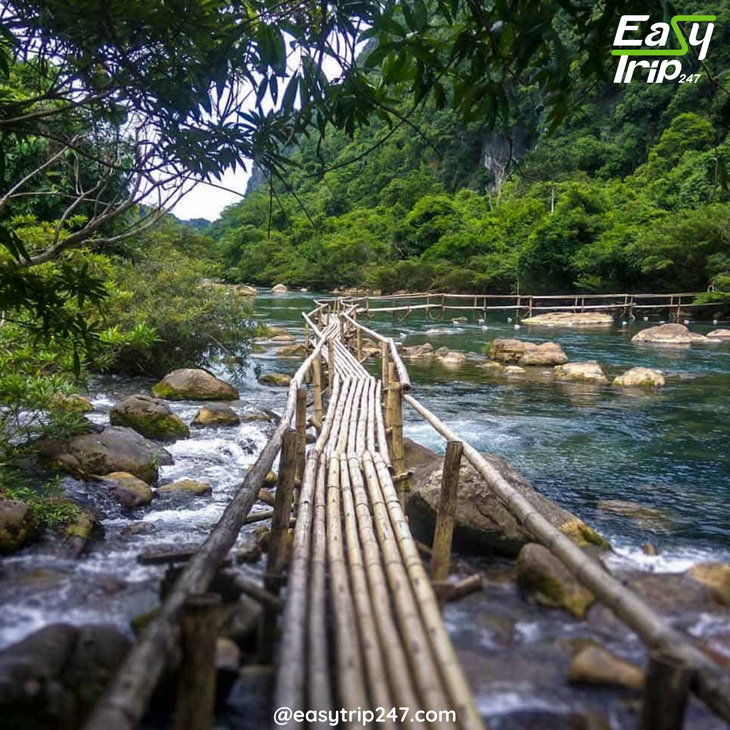Best Time to Visit Vietnam’s National Parks: A Journey Into Wild Beauty
On
23/06/2025Reading time:
1 min
Summary:
Vietnam is a land of contrasts, where ancient cities and modern energy meet breathtaking natural wonders. Among its greatest treasures are the country’s lush national parks—untamed spaces that stretch across mountains, forests, rivers, and coastlines.

Each national park in Vietnam has its own unique climate, flora, and fauna. Because the country spans several ecological zones, the weather varies dramatically from region to region. That’s why understanding the best time to visit Vietnam for national park exploration depends not just on the weather, but also on what you want to see—wildlife, waterfalls, trekking trails, or vibrant plant life.
For most travelers, the best time to visit Vietnam for national parks falls between October and April. This period is considered the dry season in much of the country, offering clearer skies, cooler temperatures, and more reliable access to trails and remote locations. Whether you’re hiking in the northern highlands, boating through wetland reserves, or exploring tropical forests, these months provide the most comfortable and rewarding conditions.
Start your adventure in Phong Nha-Ke Bang National Park, located in Quang Binh Province. This UNESCO World Heritage Site is home to some of the largest and most spectacular caves in the world, including Son Doong—the planet’s biggest. The best time to visit Vietnam and experience Phong Nha’s limestone wonders is from February to August, when the caves are open and the park is at its most accessible. In the dry months, underground rivers are calm, jungle treks are safer, and cave photography becomes a magical experience with soft sunlight filtering through karst openings.
Farther north, Cuc Phuong National Park—Vietnam’s oldest—offers a different kind of wilderness. Famous for its biodiversity and primate conservation centers, Cuc Phuong is best visited in April and May, when the weather is mild and the forest bursts into vibrant bloom. It’s also the season when thousands of butterflies take flight, creating surreal scenes straight out of a fairytale. Ask any nature lover, and they’ll tell you this is one of the most enchanting times of year—and hands down the best time to visit Vietnam if you want to be surrounded by fluttering wings, ancient trees, and rare wildlife.
For those looking to explore tropical ecosystems, Cat Tien National Park, located between Ho Chi Minh City and Da Lat, is a must-visit. This park is a haven for endangered species such as gibbons, Asian elephants, and crocodiles. The dry season, from December to May, is the best time to visit Vietnam if you want to take night safaris, trek into the jungle, or paddle through river systems without the interference of monsoon rains. During this time, the forest is alive with sounds and movement, and guided eco-tours allow you to spot animals in their natural habitats.
Heading south, U Minh Thuong and U Minh Ha National Parks in the Mekong Delta are rich in swamp forests and birdlife. While these parks can be visited year-round, the best time to visit Vietnam for exploring its deltaic biodiversity is in the cooler, drier months of December to March. You’ll glide through tranquil waterways, observe nesting storks and herons, and breathe in the earthy aroma of mangroves, all without the intensity of heat or the threat of flooding.
If you crave high-altitude adventures, Ba Be National Park in the northeast is a lesser-known jewel. With its massive freshwater lake, waterfalls, caves, and towering limestone cliffs, Ba Be is a dream for kayakers, trekkers, and photographers alike. The best time to visit Vietnam and unlock Ba Be’s full charm is in October and November, when the water level is high, the weather is mild, and the mist that clings to the lake adds a layer of ethereal beauty.
Trekking lovers will also find paradise in Bach Ma National Park, located between Hue and Da Nang. This central Vietnam park is known for its dense cloud forests, moss-covered trails, and cool mountain air. The best time to visit Vietnam for cloud-hiking and birdwatching in Bach Ma is from March to September, when visibility is high and the rich greenery of the forest is at its peak. With fewer tourists than other parks, Bach Ma offers a truly tranquil escape into nature.
Choosing the best time to visit Vietnam for national park exploration also means thinking about what kind of traveler you are. If you love adventure and don’t mind occasional rain, you might enjoy the shoulder seasons of September and early October, when parks are less crowded but still accessible. These months often bring stunning colors to the forests and waterfalls at their most powerful due to recent rains. On the flip side, if you prioritize safety, dry trails, and long days of sun, stick to the peak dry season.
One of the underrated joys of visiting Vietnam’s national parks is connecting with local communities. Many parks are surrounded by ethnic minority villages, where traditional lifestyles and hospitality remain strong. Choosing the best time to visit Vietnam allows you to combine your love for nature with cultural exchange—trekking by day and enjoying home-cooked meals by night.
Another factor in determining the best time to visit Vietnam is the park infrastructure. During dry months, transportation is smoother, visitor centers are fully operational, and guides are more available. You’ll have better chances of joining small-group tours or even arranging custom eco-adventures tailored to your interests.
For photographers, the best time to visit Vietnam is when light and color converge. Early mornings in the highlands during spring, golden afternoons in the Mekong wetlands, and soft mists over mountain lakes in autumn create ideal conditions for capturing Vietnam’s wild beauty. Fewer tourists also mean fewer distractions in your frame—and more time to pause, compose, and absorb the scenery.
Sustainability is another compelling reason to travel during the optimal seasons. Parks are less stressed by visitor overload during the shoulder and dry seasons, meaning your travel has a lower impact. You’ll be helping local economies during times when tourism isn’t peaking and encouraging more balanced development of ecotourism across the country. Choosing the best time to visit Vietnam is not only better for you—it’s better for the environment, too.
In a country as naturally rich as Vietnam, the national parks offer more than just a walk in the woods. They are places where rare species thrive, ancient ecosystems persist, and human and nature coexist in quiet harmony. But their full beauty is revealed only when the timing is right.
So, as you plan your next adventure, remember: the best time to visit Vietnam is when the parks are alive, accessible, and unspoiled by the rush of crowds or the heaviness of the monsoon. Whether you’re caving in the karst heartlands, birdwatching in a lowland swamp, or hiking into the clouds of a hidden peak, Vietnam’s national parks await—and they’re at their most magical when you know just when to go.
Design Your Tour Today And Get A Quote. Contact Us Here: +84.975.504.825
Source: Easytrip247 Team compiled.
